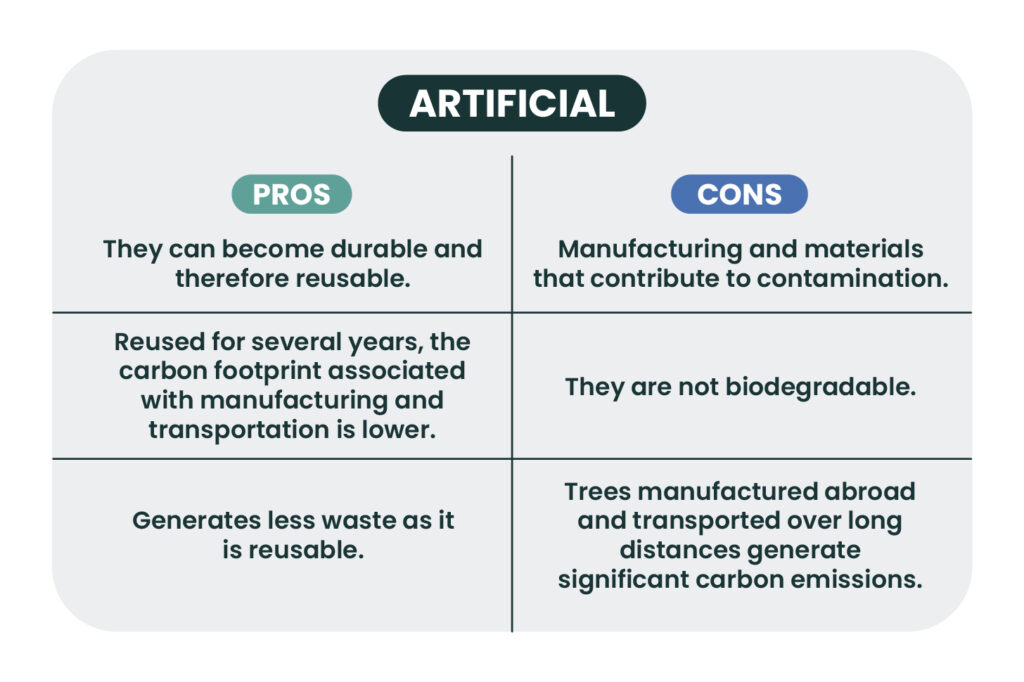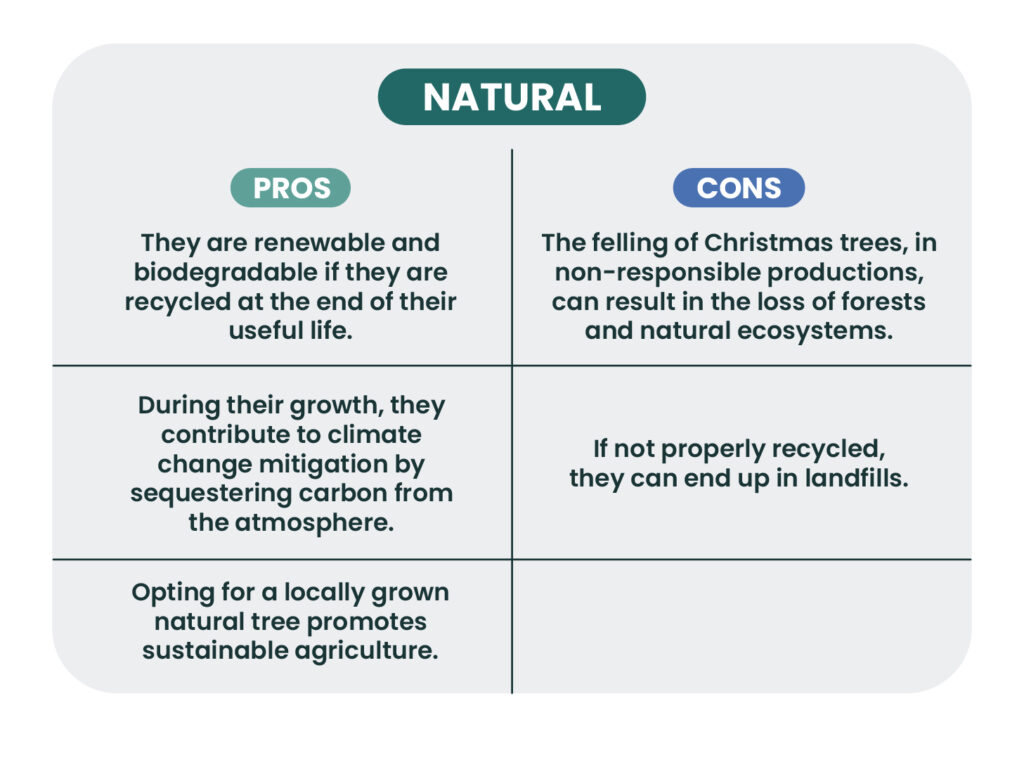As we approach the holiday season, questions arise about choosing the right Christmas tree. Is it more convenient to have an artificial tree and reuse it for the next years, or a natural tree, more traditional and with the possibility to recycle it at the end of the season? What is best for the environment and, consequently, for you?
The Christmas tree tradition has transformed over time, but its presence in homes during the holidays remains part of the iconography of Christmas. A classic. Let’s see below what environmental and sustainability aspects to consider when deciding to buy one type of tree or another.
THE ROOTS OF THE CHRISTMAS TREE
The tradition of decorating a tree during Christmas, which originated in Nordic cultures, has transcended borders and has become a universal symbol of the holiday season. Although its origin is in countries with different climates and contexts, the practice has been adapted and adopted worldwide, regardless of geographical variations.
The Nordic countries, the birthplace of the Christmas tree tradition, have influenced the way other cultures celebrate the holiday. In places where temperatures are high during Christmas, the adaptation of tradition has led to the introduction of trees of other local species. Although choosing Mediterranean trees may seem like an alternative, they can also suffer from being indoors in high heat and end up in the trash.
NATURAL CHRISTMAS TREES
Miguel Ángel Soto, head of Greenpeace Spain’s forest campaign, stresses that the key lies in the reuse and conscious use of what you already have. If you already have an artificial tree from previous years, the most sustainable option is to reuse it. Likewise, if you have a spruce or other tree at home, or even a decorative houseplant, using what you already have is best practice.
The problem with natural fir trees lies in their difficult survival after the Christmas season. Ecologistas en Acción reports that more than two million Christmas trees in Spain end up in the garbage or are shredded to become compost. It is very difficult for these trees to adapt to the homes and temperatures of some regions and to survive. Therefore, they end up dying and it is decided to discard them before this happens.
If the choice is a natural tree, the Federation of Nursery Farmers of Catalonia (FVC) recommends making sure that it has been grown in a nursery, following regulations of respect for the environment and avoiding deforestation. These actions try to encourage us to choose natural trees so that we take care of nature and be responsible for the environment. The goal is to preserve the places where trees grow and be friendly to the environment while celebrating Christmas.
Miguel Angel Soto suggests a responsible consumption approach to take care of the planet during the holidays. Using existing houseplants, such as cacti or succulents, to create holiday decorations is an eco-friendly and sustainable option. In addition, creativity can be key: from decorating books to building origami Christmas trees, there are multiple ways to celebrate sustainably.
ARTIFICIAL CHRISTMAS TREES
In a National Geographic article, we can learn more about this dichotomy of Christmas trees, focusing on artificial trees. While these may seem more convenient, their environmental cost outweighs their benefits.
In the United States, 81% of households opt for artificial trees, mostly made of polyvinyl chloride (PVC), derived from petroleum and potentially contaminated with lead and other toxic substances.
The process of manufacturing and transporting artificial trees contributes significantly to greenhouse gas emissions. Además, su vida útil es limitada, ya que la mayoría acaban en los vertederos sin ser biodegradables.
Rick Dungey, spokesman for the National Christmas Tree Association of the United States, insists that natural trees are the most sustainable option according to all environmental and scientific groups. Although some natural trees may end up in landfills, more and more companies and organizations are focusing on growing, selling, and recycling trees, thus avoiding indiscriminate logging.
Ultimately, the choice between an artificial and a natural tree depends on personal considerations and environmental values. According to the information provided, sustainability leans towards responsibly grown and circularly managed natural trees. But if you have an artificial one at home, it’s best to use it for as many years as possible.
ARTIFICIAL AND NATURAL CHRISTMAS TREE: PROS AND CONS

